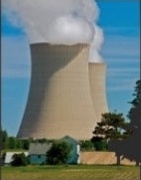[…]
The Kishida administration spent only four months on this policy initiative without making any serious effort to win broad public support. The attempt to chip away at important policy principles comes on the heels of its recent decision to drastically beef up Japan’s defense capabilities.
The administration’s new agenda calls for accelerating the process of restarting idled nuclear reactors, extending the life span of aging reactors and constructing new ones to replace moribund facilities. It deviates sharply from the restrictive policy in place since the 2011 Fukushima nuclear disaster. We beg the administration to retract this unacceptable policy about-face.
RASH MOVE BASED ON DUBIOUS LOGIC
Kishida in late August called for debate on promoting nuclear power generation. He did not mention any potentially controversial key elements of the proposal during the July Upper House election, such as “reconstruction” of old reactors, even though this represents a major regime shift. After the election, the administration raced to develop new policy guidelines in a manner that were far from democratic.
It amounts to keeping the nation heavily dependent on nuclear energy for decades to come. This will hollow out the principle of reducing the nation’s reliance on nuclear power “as much as possible,” which has been upheld since the catastrophic triple meltdown more than a decade ago.
[…]
Kishida cited the “ongoing crisis” of a power crunch and rush to realize a carbon-neutral future as reasons for expanding the use of nuclear power.
But the government’s plan to promote nuclear power generation will not help ride out the current energy crisis. Restarting an offline reactor requires following established procedures, so this approach will not increase the nation’s power supply quickly or significantly. Extending the life span of aging reactors and building new ones to replace those destined to be decommissioned will only start producing benefits after 10 or more years. The outlook of these plans is murky and a strong case cannot be made for rushing into the decision.
The government also has its policy priorities askew. The overriding priority is to secure a stable energy supply and reduce the nation’s carbon footprint. This should be accomplished by promoting domestic renewable energy sources, not on expanding nuclear power generation. The government has promised to develop renewable energy into a major power source. It should first make all-out efforts to ramp up power generation using renewable energy sources and, if shortages remain, consider ways to tap other energy sources.
NUMEROUS QUESTIONS UNANSWERED
The proposal to bolster nuclear power generation raises numerous questions.
The older a reactor grows the more uncertain its safety becomes. The legal life span of a nuclear reactor is 40 years in principle but can be extended to 60 years in certain cases. This rule was introduced under a bipartisan agreement after the disaster at the Fukushima No. 1 nuclear plant and incorporated into the related law under the jurisdiction of the Nuclear Regulation Authority (NRA).
But the government has decided to transfer this rule to the jurisdiction of the Ministry of Economy, Trade and Industry, which champions nuclear power generation. The move is aimed at paving the way for extending the life span of reactors beyond the 60-year limit by establishing a new system of periodical reactor inspections for safety checks at intervals of 10 years or less. This amounts to nothing more than a fait accomplis to secure reactor operations beyond 60 years without engaging in meaningful policy debate. It could also gut the principle of “the separation between promotion and regulation.”
[…]
The government’s plan also calls for developing and constructing “next-generation innovative reactors.” The only next-generation innovative reactor that appears technologically feasible in the near term, however, is a conventional light-water reactor equipped with a better safety mechanism than the current version. These reactors are already in operation in some countries. But it remains doubtful whether this is really a safety innovation.
In addition to Japan’s susceptibility to major natural disasters, potentially grave nuclear safety hazards include its ability to deal with a a possible military attack like the one that occurred in Ukraine.
But the most fundamental and intractable challenge is how to deal with spent nuclear fuel and radioactive waste from nuclear plants, inevitable byproducts of nuclear power generation.
The grim reality is that there is no prospect for establishing a nuclear fuel recycling system or securing a site for final disposal of nuclear waste in the foreseeable future.
The new nuclear policy guidelines offer no answers to these questions. Just as it did in making a radical shift in the nation’s security policy, the Kishida administration is taking advantage of public anxiety to rush headlong into a major nuclear policy change by simply stressing the benefits of the move without responding to legitimate questions and concerns.
The four-month process of making the decision on this policy change indicates the government only acted in line with predetermined conclusions and a certain timeframe in mind.
LESSONS OF FUKUSHIMA
The advisory council for the industry ministry that discussed the proposal did not even scrutinize the core question of how nuclear power generation will help secure a stable energy supply, which is supposed to be the core purpose of the new policy initiative.
Instead, the panel spent ages discussing approaches to extending the life of reactors and building new ones, apparently on the assumption that promoting nuclear power is a given.
Members of the panel were mostly proponents of expanded use of atomic energy. A small number who remained cautious called for national debate on the matter over the next 12 months, but the idea was brushed aside.
[…]
The government says it will solicit public opinions and hold meetings with concerned parties to alleviate any fears. But such steps would be meaningless if they are intended only to placate disgruntled citizens to ease the political pressure of opposition.
Meaningful debate requires the involvement of a wider spectrum of experts, including those who have no interest in nuclear power generation and those who remain skeptical. The country deserves a meticulous and multifaceted debate on all key issues and questions, including whether it is really vital to produce more electricity with nuclear power to achieve a carbon-free future.
The Diet has an important role to play. All the political parties should start independent discussions on this issue.
Any rash change in nuclear policy is unacceptable. Let us not forget the lessons of the 2011 nuclear disaster and consider how best to fulfill our responsibility to future generations.
–The Asahi Shimbun, Dec. 23
Read more.




